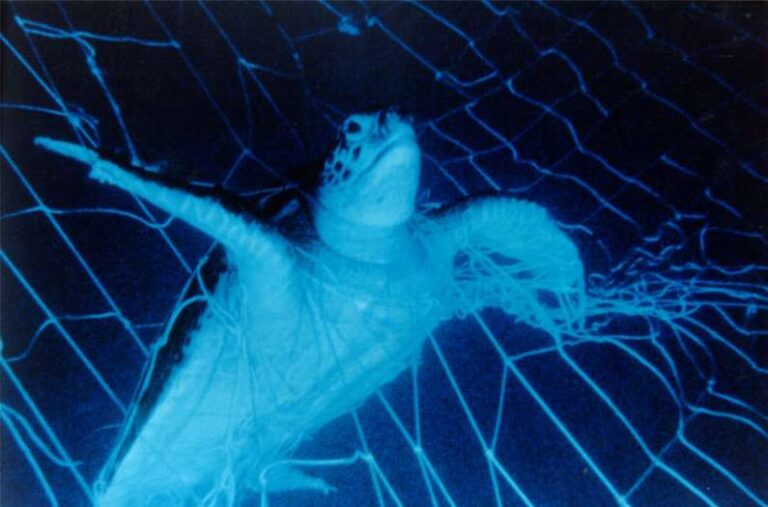It’s one thing to design a solution to an environmental problem. It’s another to make something that people will actually use.
That was the challenge confronting Arizona State University (ASU) biologist Jesse Senko and collaborators, as they tried to build a lighting system that fishers would be willing to attach to their nets in order to warn away sea turtles.
Gillnets that dangle like curtains in the water for hours are a major hazard for these turtles, which become entangled and drown. Along the Pacific Coast of Mexico’s Baja California Peninsula, for example, scientists in one study found that at least 1,000 endangered Pacific Loggerhead turtles perished in gillnets at a single fishing area in one year.
It’s been known for at least 15 years that attaching lights to these nets could cut the accidental nettings significantly, while not scaring off the fish these anglers want to catch. But building a light that fishers will use is another thing. Battery-powered systems need to have batteries replaced, adding to the cost and logistical headaches, and creating an entry point for saltwater. Chemical light sticks—much like the ones kids carry while trick-or-treating at Halloween—only last 24 hours before needing to be replaced.
Senko and other scientists from ASU and the National Oceanic and Atmospheric Administration teamed up with Mexican fishers to create an alternative. The solution: A self-contained solar-powered light that doubles as a net buoy.
The design emerged from conversations in 2018 between the researchers and gillnet fishers who ply the waters off the southern coast of Baja California in search of fish such as yellowtail amberjack. What emerged was a small plastic cylinder packed with electronics, including thin-film solar cells and a battery that powered strips of flashing green LED lights. The buoyant light had a hollow tube through the middle, enabling fishers to string it to their nets like a bead on a necklace. Strung across the upper edge of the net, they resemble Christmas lights on the edge of a roof. The system held enough charge to power lights for five days without sun.
So far, it appears to be a hit with both fishers and turtles.
In tests near the peninsula’s southern tip, scientists worked with fishers to conduct a series of test fisheries. Nets hung with lights caught 63% fewer turtles than ones with no lights—17 versus 50 (The nets were checked every hour and all the turtles were released unharmed.). At the same time, there was no discernible difference in how many fish were caught, according to results published last week in Conservation Letters.
“The results were pretty exciting,” said Senko. “It’s a win-win in the sense that you’re getting a light that lasts significantly longer, and it also seems to reduce bycatch just as effectively as lights that require replaceable batteries.”
Local fishers praised the project for including them. “They took us into account and gave us the freedom to give our opinions and make modifications,” said Juan Pablo Cuevas Amador, one of the local fishers and a co-author on the paper. “For us, it’s important that it be done in collaboration because with what they know and what we know, we can do quite interesting things.”
In the ultimate compliment, the participating fishers asked if they could keep the lighting system when the experiment ended, because it reduced the headaches of dealing with trapped turtles.
“They’ve been fishing with these lights ever since,” said Senko. “As far as we know, they are the only fishers on the planet fishing with solar-powered lighted nets.”
But that exclusive status might not last for long. The scientists are working with a private company to commercialize the design. It could be showing up on nets within three years. They are also working to understand the turtles’ responses to the flashing lights, with the hope that it will open the door to changes that deter turtles even more effectively.
“My goal,” said Senko, “Is how do we get that 63% reduction to a 95% reduction.”
Senko, et. al. “Harnessing Solar Energy to Reduce Sea Turtle Bycatch.” Conservation Letters. Oct. 15, 2025.
Photo: ©NOAA
Images are for reference only.Images and contents gathered automatic from google or 3rd party sources.All rights on the images and contents are with their legal original owners.

